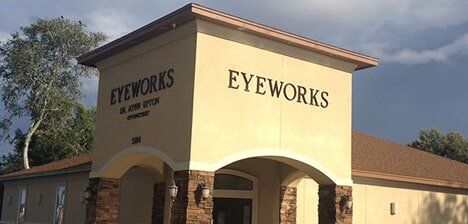FAQS
FAQ
What are the most common eyesight problems?
Myopia is a refractive problem which makes it difficult to see far distances. It is also called nearsightedness.
Hyperopia, also known as far-sightedness, makes your eyes work harder to see small details up close.
Astigmatism is when the eye is not round; the front curve is more like a football with a long curve and a short curve. This creates a distortion in your vision, like the funhouse mirrors.
Presbyopia is the age-related problem where you lose the ability to adjust your focus for near objects.
Myopia is a refractive problem which makes it difficult to see far distances. It is also called nearsightedness.
Hyperopia, also known as far-sightedness, makes your eyes work harder to see small details up close.
Astigmatism is when the eye is not round; the front curve is more like a football with a long curve and a short curve. This creates a distortion in your vision, like the funhouse mirrors.
Presbyopia is the age-related problem where you lose the ability to adjust your focus for near objects.
What is a cataract?
A cataract is a clouding in the lens of the eye. Over time, the clouding becomes heavier, causing progressively more blurry vision.
A cataract is a clouding in the lens of the eye. Over time, the clouding becomes heavier, causing progressively more blurry vision.
What is glaucoma?
This eye disease is characterized by an increase in the pressure inside the eye. The higher pressure pushes on the optic nerve, causing damage and loss of sight. Since these damaged nerves cannot regenerate, the vision loss is non-reversible, even with treatment.
This eye disease is characterized by an increase in the pressure inside the eye. The higher pressure pushes on the optic nerve, causing damage and loss of sight. Since these damaged nerves cannot regenerate, the vision loss is non-reversible, even with treatment.
What is the benefit of polarized lenses?
Polarized lenses, while they look tinted, are actually a series of gratings on the lens that only lets light through at a certian angle, while blocking light from other angles. This reduces glare, especially off of water and pavement.
Polarized lenses, while they look tinted, are actually a series of gratings on the lens that only lets light through at a certian angle, while blocking light from other angles. This reduces glare, especially off of water and pavement.
Are "thinner and lighter" lenses really worth it?
The higher the prescription, the greater the benefit to use these "thinner and lighter" lenses. These lens materials bend the light more severely, so you can get a greater refractive effect with less material..
The higher the prescription, the greater the benefit to use these "thinner and lighter" lenses. These lens materials bend the light more severely, so you can get a greater refractive effect with less material..
How will I know if you are a provider on my insurance plan?
We currently work with Blue Cross/Blue Shield, VSP, Davis Vision, Eyemed, and Coast to Coast Vision Plan. However, this list is ever-changing due to insurance policies. For specific questions related to your plan, please call our office at 361-993-5882 during business hours and we will be happy to answer those questions.
We currently work with Blue Cross/Blue Shield, VSP, Davis Vision, Eyemed, and Coast to Coast Vision Plan. However, this list is ever-changing due to insurance policies. For specific questions related to your plan, please call our office at 361-993-5882 during business hours and we will be happy to answer those questions.
CONTACT INFORMATION
Dr. Aynn Upton, Optometrist
Dr. Roxana Hastings, Optometrist
Dr. Roxana Hastings, Optometrist
Address:
5014 Holly Rd, Corpus Christi, TX 78411
Email: eyeworkscc@sbcglobal.net
Email: eyeworkscc@sbcglobal.net





Hours of Operation
| Mon-Fri | 8:30 AM - 6:00 PM |
| Sat | Closed |
| Sun | Closed |
OUR LOCATION

BROWSE OUR WEBSITE
CONTACT INFORMATION
Dr. Aynn Upton, Optometrist
Dr. Roxana Hastings, Optometrist
Dr. Roxana Hastings, Optometrist
Dr. Lauren Jensen, Optometrist
Address:
5014 Holly Rd, Corpus Christi, TX 78411
Email: eyeworkscc@sbcglobal.net
Email: eyeworkscc@sbcglobal.net





Hours of Operation
| Mon-Fri | 8:30 AM - 6:00 PM |
| Sat | Closed |
| Sun | Closed |
OUR LOCATION

Content, including images, displayed on this website is protected by copyright laws. Downloading, republication, retransmission or reproduction of content on this website is strictly prohibited. Terms of Use
| Privacy Policy

